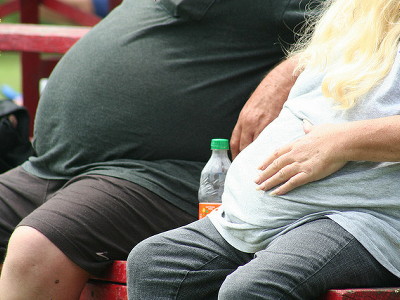Women have higher obesity rates in low-income groups, but males do not

ByTobyotter
There is a time when "the width is good" is a symbol of wealth, but in modern society "Obesity is a problem of low-income people in developed countries", "obesity is few in intelligent high-income groups" The image may have penetrated. However, research results suggest that it may be a biased image made by the media actually.
A large-scale survey analyzing the relationship between income and educational background and obesity rate in the United States reveals that the majority of the obese population is a layer with sufficient income, while adult women tend to have obesity in low-income brackets, although adult males It became clear that there is no correlation between income and obesity rate.
Details are as below.More Obesity Among Poorer Women But Not Poorer Men In America
When asked "America" "Obesity", it associates with a figure such as "low-income people who overwhelm junk foods while watching TV" "high-income people who buy vegetables and organic food at a high-end supermarket and go to the gym" Is not there a lot of people say? The relationship between the socioeconomic level and the educational level and the obesity rate has been studied so far, but the media reported only limited data, and "Obesity is participating in making a biased image of the problem of the poor" It has been pointed out.
America Disease Control CenterIt is a division ofNational Center for Health StatisticsAccording to the report, the obesity rate of adult male is almost uniform distribution regardless of income, it seems that slightly higher in high income group.
In this survey, from 2005 to 2008National Health and Nutrition Examination Survey (National Health and Nutrition Survey)We use data of 5000 people, which is data that sex, race, income distribution and so on will be a microcosm of the whole of America. Also, the definition of "obesity" in this survey is "Body Mass Index (BMI)Is 30 or more ", this is classified as" obese ", for example, a body shape such as height 162 cm and 79 kg or more, height 174 cm and weight 92 kg or more. "Low income", "middle income", "high income" in this survey means that households' annual income isPoverty level"Low income" is classified as less than 130%, "Medium income" is more than 130% and less than 350%, and more than 350% is classified as "High income". For reference, 130% of the poverty level is the 4-person family with an annual income of 29,000 dollars (about 2.43 million yen) for the family, 350% of the poverty level is also equivalent to $ 77,000 It is said that it corresponds to yen).
It is estimated that more than 72 million adults (over 20 years old) are currently overweight or overweight in the United States, which is about 1/3 of the total adult population, but according to this survey 41 % (About 30 million people) is classified as "high income", 39% (over 28 million people) is "middle income", 20% (little 15 million people) is "low income" distribution It is. Of five people with obesity, only one of them is low-income people.
Looking at the obesity rate by income and gender, male has 29.2% of obesity at "low income", 34.6% at "middle income", and 32.9% at "high income", with only a small percentage of income The obesity rate is getting higher. In women, 42.0% for "low income", 39.0% for "middle income", and 29.0% for "high income", conversely it tends to be more obese than low-income people, but it tends to be obese more On the other hand, this tendency is significant only in white women,There is no significant correlation between income and obesity rate in African and Hispanic womenThat's right.
The correlation between the education level and the obesity rate was stronger than the correlation between the income and the obesity rate in both men and women, but the difference is remarkable in women here as well, and in men the final academic background is less than high school graduates ( The percentage of obesity was 32.1% in overseas university graduates and 27.1% in university graduates and over, while 42.1% for women under high school and 23.4% for university graduates.
In addition, when comparing the data of 1988 to 1994 with the data of 2005 to 2008, both male and female are increasing obesity rate in every layer regardless of income, educational background, and race.
Related Posts:
in Note, Posted by darkhorse_log







